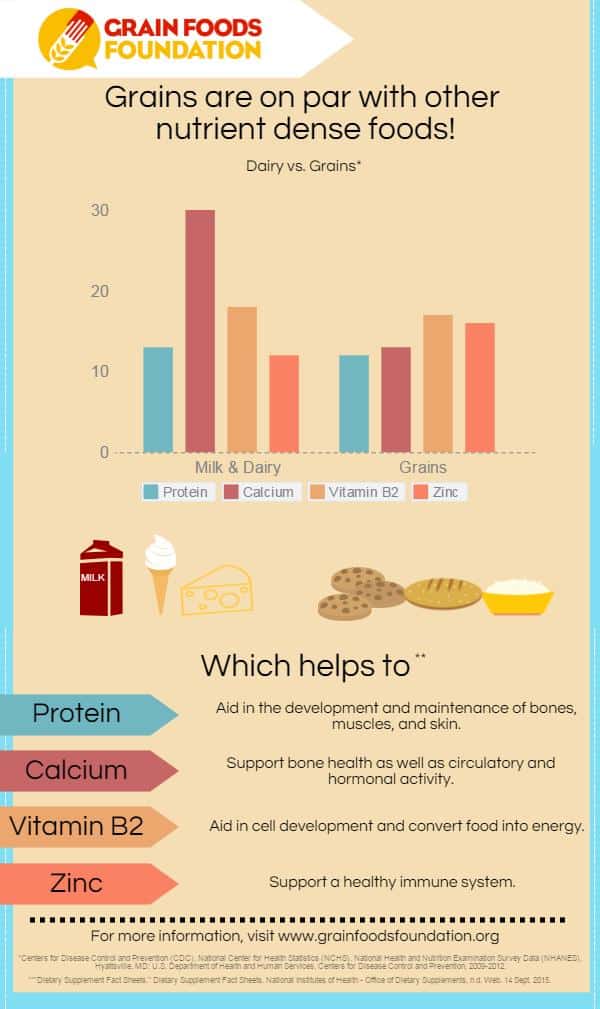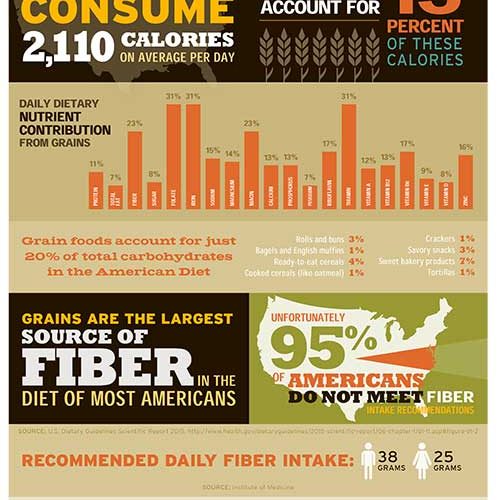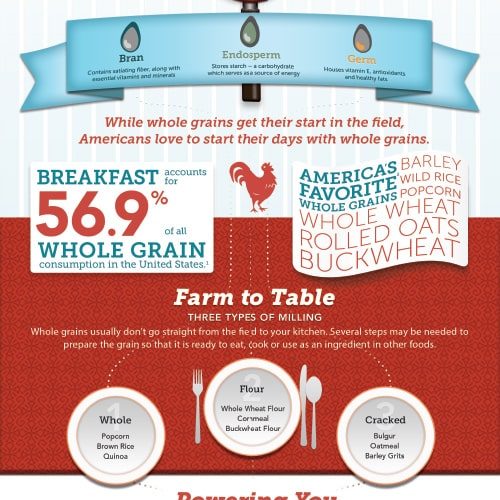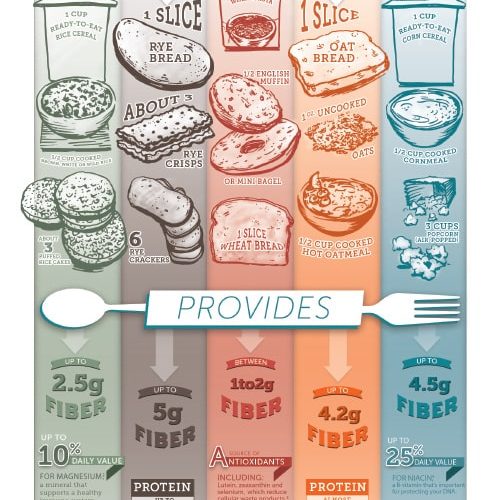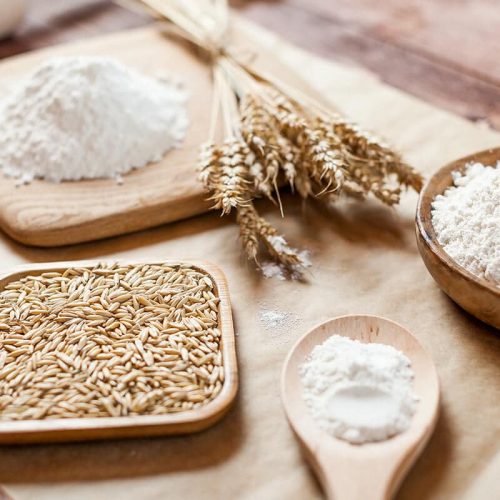Grains play an important role in the American diet,
providing much-needed nutrients, such as folate, fiber, iron, and other B vitamins. In today’s crowded media landscape, between fad diets and the ever-growing gluten-free craze, it is easy to become confused about the role of grain foods in the diet and how removing them will inadvertently deprive them (and their families) of the vital nutrients found in grain foods.
Many Americans may be surprised to learn that grain foods account for just 15 percent of calories in an average American’s diet. This number is similar across all ethnicities: Whites – 14 percent, Hispanics – 14 percent, and African Americans – 15 percent. Despite this, grains remain the largest source of fiber in the American diet — an important consideration given nearly 95 percent of Americans fall short of the daily recommended fiber intake. In other words, most Americans would benefit from increased grain consumption.
In addition to grain foods’ contribution to fiber intakes, they are also nutrient-dense foods filling in the dietary gaps of nutrients of concern as identified by US Dietary Guidelines, including B vitamins (folate, thiamin, niacin), iron, zinc, magnesium, and calcium.
Fiber
Folate
is a B vitamin most associated with preventing neural tube defects during early pregnancy. By the time most women are aware of being pregnant, the critical window for folate has already passed. That’s why it’s so important to get adequate folate before a woman becomes pregnant. Folate is also important for heart health. About half of a person’s daily folate amounts come from grain foods.
Thiamin
also known as vitamin B1, is important for cellular function and energy metabolism.
Niacin
Iron
is a mineral the helps bring critical oxygen to cells throughout the body. About half of a person’s daily iron intake comes from grain foods.
Zinc
Magnesium
Calcium
Grain foods have similar nutrient density as milk and dairy.
Grain foods provide similar amounts of protein per serving (12% daily value, or DV) to dairy foods (13% DV). The two also have near-identical levels of riboflavin, also known as vitamin B2 (17% DV for grains, vs. 18% DV in milk/dairy). And while milk/dairy is an excellent source of calcium (30% DV), grain foods are still a good source (13% DV).
Scores of research reinforce the vital role of grain foods in a well-balanced and nutritious diet. Many Americans fall far short of their needs for fiber, folate and iron, three of the many nutrients found in grains.
Looking to cut calories? Grain foods deliver a number of necessary nutrients for relatively few calories.

